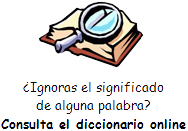Big Tech, Community Colleges Partnering
in Education
Neethi Anand Gangidi came from India to the United
States to study chemical engineering. But when the Covid-19 pandemic
created difficulties for her doctoral studies, she changed direction by
studying artificial intelligence, or AI, at Houston Community College (HCC)
in Texas.
At HCC, Gangidi and a team of students worked on a difficult problem:
finding ways to help keep people safe in dangerous situations, such as
school shootings. Their solution used AI to develop an autonomous
vehicle to enter areas that are too dangerous for people. Gangidi’s team
won a national innovation award for their project at Intel’s Global
Impact Festival in San Jose, California, this year.
Gangidi is one of thousands of students involved in partnerships between
large technology companies and community colleges in the U.S. Companies
such as Dell Technologies, Intel, Google, and Amazon have developed
special training programs for students. Some areas of study include
artificial intelligence, data science, and user experience design.
Community colleges offer two-year associate degrees in many technical
and liberal arts subjects.
The American Association of Community Colleges, or AACC, says there are
1,043 community colleges in the U.S. In the last 10 years, an average of
more than 80,000 international students have attended community colleges
yearly in the U.S.
The increase in AI
The use of AI, also called machine learning, is growing. AI helps
computer systems do things which in the past only human beings could do,
such as identify faces.
AI is commonly used in work which uses lots of data, such as banking,
supplying materials and products, and healthcare. But now other areas,
such as natural language processing, also use the technology. AI is even
used in artistic work such as music composition.
A 2021 study found that 43 percent of businesses reported increased use
of AI in the last year. However, 39 percent of leaders at those
companies said lack of workers with AI training was a barrier to using
the technology.
Intel’s AI for Workforce Program
In early 2020, Intel began its AI for Workforce program, which has now
partnered with 74 community colleges in 32 states. Intel provides
content for AI classes, AI lab design and technology, training for
teachers, and practical applications for areas such as computer vision.
The company hopes to have partnerships in all 50 states by the end of
2023.
Dell Technologies has partnered with Intel to help pay for the
Artificial Intelligence Incubator Network. The Network has given $40,000
grants to 10 community colleges to help build AI laboratories. The
Network also supports virtual AI training and organizes monthly meetings
between Dell, Intel, and community colleges to help improve AI education.
Adrienne Garber is a Senior Strategist for Higher Education at Dell
Technologies. She told VOA Learning English that the AI for Workforce
program gives students practical training.
“The AI for Workforce curriculum is anchored in portfolio projects,
real-world authentic learning experiences, real data sets, and problems
that are contributed by a community of practice.”
Carlos Contreras is the director of Intel’s AI for Workforce program. He
noted that the program includes training in ethics, making it different
from other kinds of technology training. The AI training asks students
to think about when it is right or wrong to use machine learning and how
people should use it.
He also noted that students can begin AI training without knowing how to
write computer code. He said, “This is a trend that we’re seeing more
and more around this technology. So, the entry point to get into AI is
lower than if you want to get into, let’s say, cyber-security.”
While students do not need to learn how to create AI software, the
training helps them use it in useful ways. For example, in Arizona, a
team of three students at Maricopa Community College developed an AI
model to help identify seizures in patients with epilepsy. Epilepsy is a
disease that affects the central nervous system.
Contreras explained that students need to know how to define the problem
they are working on, identify and classify the data sets they need to
put into the AI computer models, and then run the models.
“And then all the sudden, I have a trained model, or my process, for the
problem I’m trying to solve.”
Garber, of Dell Technologies, noted that each community college can
choose how it wants to use the AI for Workforce program. Instead of
having one curriculum for all colleges, the program can be changed to
serve the needs of each community.
“They’re figuring out where in their academic pathways does this content
fit. So, it might be a certificate program, it might be an associate’s
degree — in some cases it’s a full bachelor’s degree…And it is a very
responsive learning content package.”
Gangidi’s path of study
Neethi Anand Gangidi explained to VOA Learning English some of the
details of AI training at Houston Community College. Students first
learn to analyze and organize information. Python is the software
commonly used and is a starting point for classes in basic data science.
“And it is very easy for any individual from any country to learn about
this. You have lots of videos on that…Just install it; download it.
That’s all you need. You need access. Start exploring.”
Gangidi said knowledge of statistics is helpful for working with data,
but that students usually do not need high level mathematics such as
calculus.
For the class, Introduction to Machine Learning, Gangidi learned how to
build models to deal with a larger amount of data. She said tools from
Amazon Web Services, Nvidia, and software such as Jupyter Notebook help
students work with data faster and at a higher level.
HCC gave her a real data project to work on to help her use the AI
training. Gangidi said that working on a real project helps students
gain experience, which employers value.
Advice for students
Gangidi says students should put their effort into their passion, or
strong interests, rather than being concerned about the name of the
university they choose to attend in the U.S.
“It doesn’t matter if you’re from Stanford, or Harvard, or community
college. It all depends upon each individual.”
She was interested in HCC because it gave her the opportunity to work in
teams on real problems, use innovation, and gain leadership experience.
She added that community colleges cost less to attend than four-year
universities. In Texas, international students can also qualify for in-state
tuition, the amount that someone living in the state pays to attend.
This, along with scholarships, reduced her tuition costs from about
$12,000 per semester to about $2,000 per semester.
In addition to Neethi Anand's team, another team of students at HCC won
a global award at this year’s Global Impact Festival. The team used AI
to develop an autonomous drone to enter dangerous places.
Gangidi thinks there are many job opportunities for people who learn to
work with data. She said, “If you know how to handle data, and if you
have a passion…anything in AI, how to handle, analyze these data, and
make a good story of the data—that’s easy, you can land up in an AI job
in any big company over there.” |
![]() ).
Utiliza el botón derecho del ratón y "guardar enlace" para descargar el
fichero a tu PC, tablet, Smartphone, etc.
).
Utiliza el botón derecho del ratón y "guardar enlace" para descargar el
fichero a tu PC, tablet, Smartphone, etc.![]() Escucha el audio
Escucha el audio



